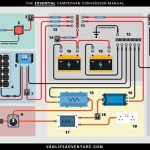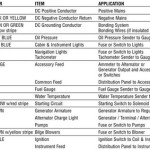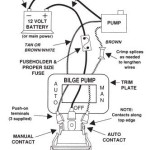Wiring Diagram 36 Volt Trolling Motor
A Wiring Diagram for a 36 Volt Trolling Motor provides a visual representation of the electrical connections between the motor, battery, and controller. It outlines the correct wiring configuration and component placement, ensuring the motor operates safely and efficiently.
Understanding the wiring diagram is crucial for proper installation, troubleshooting, and maintenance of the trolling motor. Benefits include optimized motor performance, extended lifespan, and reduced risk of electrical hazards. A notable historical development was the introduction of standardized color-coded wiring, simplifying the installation process and improving safety.
The focus of this article explores the components, wiring procedures, and troubleshooting common issues associated with 36 Volt trolling motors, providing a comprehensive guide for understanding and maintaining these electrical systems.
Wiring Diagram 36 Volt Trolling Motor: Essential Aspects
Wiring diagrams are essential for understanding the electrical connections of a 36 Volt trolling motor. They provide a visual representation of the components and their relationships, enabling proper installation, maintenance, and troubleshooting.
- Components: Understanding the components involved, such as the motor, battery, controller, and wiring, is crucial for comprehending the overall system.
- Connections: Identifying the correct wiring connections between the components ensures the motor operates safely and efficiently.
- Voltage: Knowing the voltage of the trolling motor (36 Volts in this case) is essential for selecting the appropriate components and ensuring compatibility.
- Safety: Following the wiring diagram correctly minimizes electrical hazards and ensures safe operation of the motor.
- Troubleshooting: Wiring diagrams aid in diagnosing and resolving electrical issues, reducing downtime and maintenance costs.
- Performance: Proper wiring optimizes motor performance, ensuring maximum efficiency and thrust.
- Maintenance: Regular maintenance, including checking wiring connections, extends the lifespan of the motor and prevents unexpected failures.
- Customization: Wiring diagrams allow for customization and modification of the trolling motor system to suit specific needs and preferences.
These aspects are interconnected and essential for a well-functioning 36 Volt trolling motor system. Understanding and applying these principles ensures optimal performance, safety, and longevity of the motor.
Components
In the context of Wiring Diagrams for 36 Volt Trolling Motors, understanding the components involved is paramount. Each component plays a specific role, and their proper integration ensures efficient and safe operation of the motor.
- Motor: The heart of the trolling motor, responsible for converting electrical energy into mechanical energy, generating thrust for the boat.
- Battery: The power source, providing the electrical energy required by the motor. Capacity and voltage must align with the motor’s requirements.
- Controller: The brain of the system, regulating the flow of electricity to the motor, controlling speed, direction, and other functions.
- Wiring: The network connecting the components, allowing for the transfer of electrical signals and power. Proper gauge and insulation are essential for safety and efficiency.
Comprehending the function, compatibility, and proper connections of these components is crucial for a well-functioning 36 Volt trolling motor system. It enables informed decision-making during installation, maintenance, and troubleshooting, maximizing performance and extending the lifespan of the motor.
Connections
Wiring connections are the backbone of a 36 Volt trolling motor system. Establishing the correct electrical pathways between the motor, battery, controller, and other components is paramount for safe and efficient operation. Understanding these connections is crucial for proper installation, troubleshooting, and maintenance.
- Polarity: Ensuring the positive and negative terminals of the battery are correctly connected to the corresponding terminals on the motor and controller is essential to prevent damage to the components and ensure proper operation.
- Wire Gauge: Using the appropriate wire gauge for the amperage draw of the motor is crucial to minimize voltage loss and prevent overheating. Selecting a wire gauge that is too thin can lead to excessive resistance and power loss, while a wire gauge that is too thick is unnecessary and can be more difficult to work with.
- Connections: All electrical connections should be clean, tight, and properly insulated to prevent arcing, voltage loss, and potential fire hazards. Loose or corroded connections can lead to intermittent operation, decreased performance, and safety issues.
- Grounding: A proper grounding system is essential for safety and to prevent electrical interference. The motor, battery, and controller should all be properly grounded to a common ground point.
By understanding and adhering to these aspects of wiring connections, individuals can ensure the safe and efficient operation of their 36 Volt trolling motor system, maximizing performance, extending the lifespan of the components, and minimizing the risk of electrical hazards.
Voltage
Voltage, a critical aspect of “Wiring Diagram 36 Volt Trolling Motor,” significantly influences component selection and system compatibility. The voltage of the trolling motor (36 Volts in this case) determines the voltage requirements of the battery, controller, and other components. Selecting compatible components ensures optimal performance and prevents damage to the system.
For instance, using a battery with a voltage lower than the motor’s requirement will result in insufficient power and reduced thrust. Conversely, using a battery with a higher voltage than the motor’s rating can lead to overheating, damage to components, and potential safety hazards.
Understanding voltage compatibility is crucial for proper installation and maintenance of a 36 Volt trolling motor system. It enables informed decision-making when selecting components, ensuring they work harmoniously to achieve the desired performance and longevity.
Safety
In the context of “Wiring Diagram 36 Volt Trolling Motor,” safety takes paramount importance. Adhering to the wiring diagram correctly minimizes electrical hazards and ensures the safe operation of the motor. This involves understanding and implementing several critical aspects:
- Polarity: Ensuring the correct polarity of connections between the battery, motor, and controller is crucial to prevent damage to components and potential electrical fires.
- Proper Wiring: Using the appropriate wire gauge and insulation is essential to handle the current draw of the motor safely. Inadequate wiring can lead to overheating, voltage loss, and increased fire risk.
- Connections: All electrical connections should be clean, tight, and properly insulated to minimize resistance, prevent arcing, and eliminate potential ignition sources.
- Grounding: Establishing a proper grounding system is vital for safety. The motor, battery, and controller should be securely grounded to a common ground point to prevent electrical shock and ensure the safe operation of the trolling motor.
By understanding and implementing these safety measures, individuals can minimize electrical hazards, ensure the safe operation of their 36 Volt trolling motor system, and enjoy a reliable and worry-free boating experience.
Troubleshooting
Within the context of “Wiring Diagram 36 Volt Trolling Motor,” troubleshooting plays a critical role in maintaining optimal performance and minimizing operational costs. Wiring diagrams are essential tools that empower individuals to identify and resolve electrical issues efficiently, reducing downtime and maintenance expenses.
Electrical problems in a 36 Volt trolling motor system can manifest in various forms, such as reduced thrust, erratic operation, or complete failure. Wiring diagrams provide a systematic approach to diagnosing these issues by visually representing the electrical connections and components. By tracing the circuit and testing poszczeglnych connections, individuals can pinpoint the source of the problem, whether it’s a loose connection, a faulty component, or a wiring error.
The ability to troubleshoot using wiring diagrams empowers users to address minor electrical issues independently, avoiding unnecessary downtime and the associated costs of professional repairs. Moreover, it promotes a deeper understanding of the system’s operation, enabling proactive maintenance and preventive measures to minimize future problems.
In summary, troubleshooting using wiring diagrams is an integral aspect of maintaining a 36 Volt trolling motor system. It empowers individuals to diagnose and resolve electrical issues efficiently, reducing downtime, maintenance costs, and promoting a thorough understanding of the system’s operation.
Performance
In the context of “Wiring Diagram 36 Volt Trolling Motor,” understanding the relationship between proper wiring and motor performance is critical. Proper wiring ensures that the electrical current flows efficiently through the motor, minimizing energy loss and maximizing thrust output. This optimized performance directly contributes to the overall effectiveness and efficiency of the trolling motor system.
For instance, improper wiring can lead to increased resistance in the circuit, resulting in reduced voltage reaching the motor. This can cause the motor to draw more current to compensate, leading to overheating and decreased efficiency. Conversely, proper wiring minimizes resistance, allowing the motor to operate at its optimal voltage and current levels, resulting in maximum thrust and extended battery life.
Practical applications of this understanding include:
- Selecting the correct wire gauge for the motor’s amperage draw ensures minimal voltage loss and maintains motor performance.
- Establishing proper electrical connections using the correct polarity and tight, insulated terminals prevents arcing and ensures efficient current flow.
- Regular inspection and maintenance of wiring connections identify and address potential issues before they impact performance.
In summary, proper wiring is a critical component of a 36 Volt trolling motor system, directly impacting its performance and efficiency. Understanding this relationship empowers users to make informed decisions during installation, maintenance, and troubleshooting, ultimately enhancing the overall boating experience.
Maintenance
Within the context of “Wiring Diagram 36 Volt Trolling Motor,” maintenance plays a crucial role in ensuring the longevity and reliability of the motor. Regular maintenance, including checking wiring connections, is paramount to extending the lifespan of the motor and preventing unexpected failures that can disrupt boating excursions.
- Inspection and Cleaning: Periodically inspecting wiring connections for signs of corrosion, loose terminals, or damage is essential. Cleaning any dirt or debris from the connections ensures optimal electrical flow and prevents resistance buildup.
- Tightening Connections: Over time, vibrations and movement can cause wiring connections to loosen. Regularly tightening all connections, including those at the battery, motor, and controller, ensures a secure electrical pathway and prevents intermittent operation.
- Wire Protection: Inspecting and replacing damaged or frayed wires is crucial. Exposed wires can lead to short circuits, electrical fires, or reduced motor performance. Proper insulation and protection of wires extend their lifespan and enhance safety.
- Moisture Prevention: Trolling motors operate in humid environments, making moisture a potential threat to wiring connections. Applying dielectric grease or using waterproof connectors can prevent moisture ingress and protect connections from corrosion.
By adhering to a regular maintenance schedule that includes checking wiring connections, individuals can proactively address potential issues, minimize downtime, and enhance the overall performance and longevity of their 36 Volt trolling motor system.
Customization
Within the realm of “Wiring Diagram 36 Volt Trolling Motor,” customization plays a pivotal role in adapting the system to meet unique requirements and preferences. Wiring diagrams provide a flexible framework for implementing modifications and enhancements, empowering users to optimize their trolling motor performance and functionality.
- Motor Selection: Wiring diagrams enable the integration of various trolling motor models, allowing users to choose the optimal power, thrust, and features for their specific boat and fishing style.
- Control Options: Users can customize the control system by incorporating foot pedals, remote controls, or GPS integration, offering greater convenience and precision in controlling the motor.
- Accessory Integration: Wiring diagrams facilitate the seamless addition of accessories such as depth finders, fish finders, and battery chargers, enhancing the functionality and versatility of the trolling motor system.
- Performance Modifications: Advanced users can modify wiring configurations to adjust motor speed, torque, and battery consumption, fine-tuning the system for specific scenarios or competitive fishing.
Customization, enabled by wiring diagrams, empowers users to tailor their 36 Volt trolling motor system to suit their individual needs, preferences, and fishing environment. By understanding the wiring principles and incorporating appropriate modifications, anglers can maximize the efficiency, convenience, and overall satisfaction derived from their trolling motor.









Related Posts








